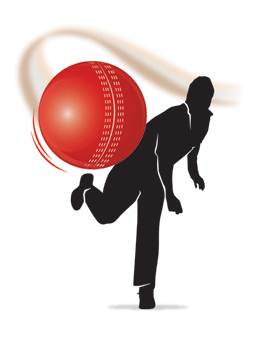Bowling Machines are Like Marmite

I have a confession. I hated bowling machines as a player. I wasn't alone. Yet others loved the same thing. It really is the Marmite of cricket practice.
I found it really difficult to get the timings of my movements right and often found myself rushed and off balance at point of contact. It became very frustrating when others were enjoying every bowling machine session.
Spin Bowling Tips: Dealing with Multiple Flaws
 Menno Gazendam is author of Spin Bowling Project. Get your free 8 week spin bowling course here
Menno Gazendam is author of Spin Bowling Project. Get your free 8 week spin bowling course here
As part of my course, I ask readers to send in their questions. Here is one problem I got from Ihsaan that many other bowlers experience:
How to Boost Nets with Video Analysis
It used to be the case that video analysis was reserved for the world of professional cricketers who could afford such luxury.
But with the cost of video equipment declining, it's now true that grass-roots players can use video to review technique and instantly use the feedback to improve.
But it's not just a matter of setting up your camera and filming yourself biffing random bowlers in an 8 minute session. At least, not if you want to get a true benefit.
The "New England" Method to Pull Off Blinding Catches

We all know that catches win matches, yet there is one type of catching opportunity that is being taken in the upper echelons of the game that isn't transferred down the playing levels.
It's when a player dives forward to take a blinder.
How to Improve Your Cricket Stamina for Longer Matches
This year I am coaching a group of talented 11 year old players. The kind of guys who one day hope to play professional cricket over 4 or 5 days.
Bur right now they are 11 years old and have only played 20 overs. This season they have had to jump up to playing 40 over games as well.
It's a big jump in required levels of stamina and concentration. One similar to players entering the professional game going from one day to multi-day cricket.
So how do you prepare your body and mind for this unique cricketing challenge?
Transform Traditional Nets into High-Intensity Training Environments
Can you remember your first ever net session?
It's quite likely that your first ever net was pretty similar to the net you had last week. The bowling may be faster and your pads a bit bigger, but essentially the humble net hasn't changed: batting for 20 minutes (if you are lucky) on a different surface to match-day; using old balls; having no fielders; bowlers alternating after every delivery; balls continuously fed; batsmen not running-between-the-wickets; and focusing on execution of correct technique over tactical decision making.
3 Simple Measures Turn Batting Bunnies to Run Getters

It only seems like a few years ago when every team had at least one batter who would walk to the wicket with his team-mates giggles carrying across the outfield.
We were all waiting for the inevitable death rattle as the "bunny" plays all round a straight one.
Top level coaches now encourage the "bunny" to think about scoring runs rather than just surviving with leaves, blocks and evasion. As a result it's common to see lower order players reverse sweeping and moving across their stumps to tuck the ball into the on-side for one.
So how can we develop the next generation of lower order batters in our clubs, academies and schools?
Is There Any Reason to Bowl No Balls?
Long jumpers don't overstep the foul line to get more distance.
Dart players don't stand closer to the board to get more accuracy.
Footballers don't practice penalties from in front of the spot.
So why is there such an "overstep-idemic" at cricket practice?
Here is a perfect example:
Retaining Young Cricketers: Training Sessions
This is the 2nd in a series of guest articles from Darren Talbot of Darren Talbot Cricket Coaching and Head of Coach Mentoring at Surrey County Cricket Club. To read part 1, click here
Over the past decade cricket clubs have worked hard to get their junior sections more formally organised with qualified coaches, good player to coach ratios and generally much better sessions for young cricketers.
Older junior cricketers get many years of weekly, structured, brilliantly organised training sessions with a qualified coach.
Then they start going to senior training.
Ah.
Stop the Insanity: Coach the 3 Patterns of Improved Running Between the Wickets

Can you imagine this at Manchester United's training ground:
Sir Alex Ferguson: "Robin! What are you doing?"
Robin van Persie: "Practicing my free-kicks Boss"
Sir Alex Ferguson: "Are you mad? You know that we don’t allow that! You're only allowed to take free kicks in matches. But make sure you don’t miss."

